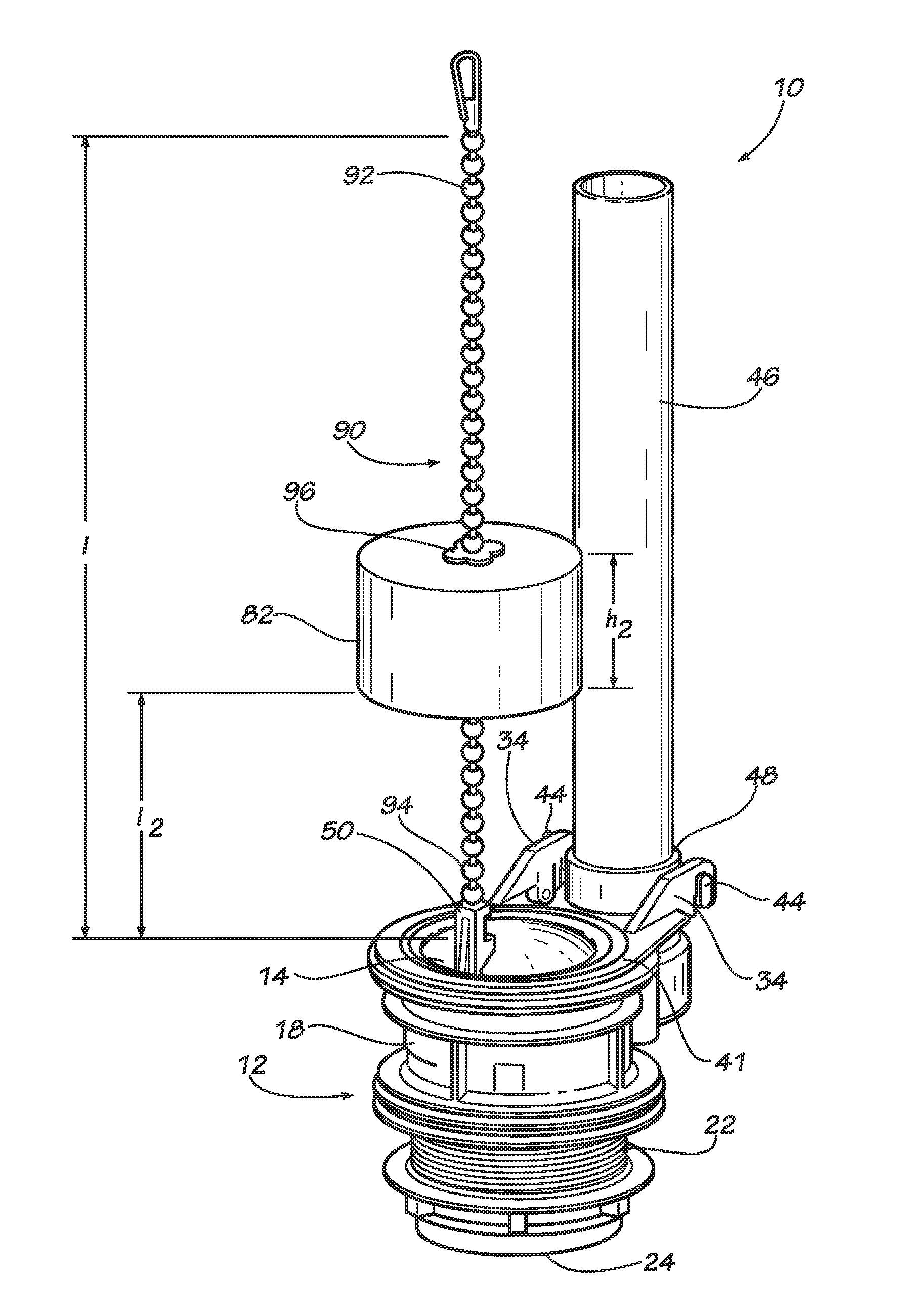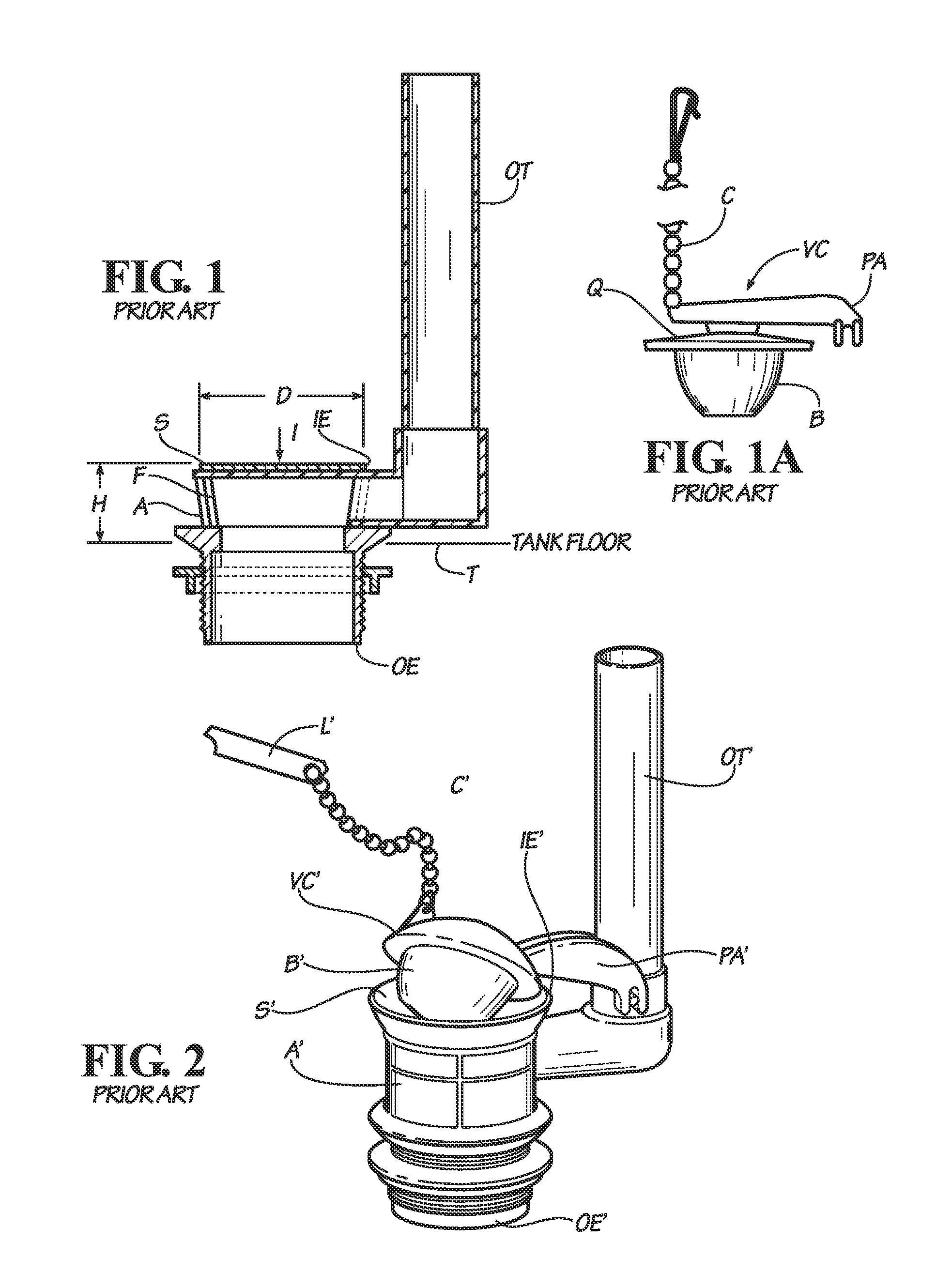Toilet Flush Valve Assemblies
a technology for flushing valves and toilets, applied in water installations, flushing devices, constructions, etc., can solve problems such as no longer requiring a minimum “hold down time”, problems may be encountered, and the effect of affecting the valve body and the two-inch inl
- Summary
- Abstract
- Description
- Claims
- Application Information
AI Technical Summary
Benefits of technology
Problems solved by technology
Method used
Image
Examples
example
[0095]The average of the flow rate properties of a standard commercially available flush valve assembly (Fluidmaster®507 flush valve) according to the prior art as shown in FIGS. 1, 1A and 2 were compared to an average of the flow rate properties of a flush valve assembly made according to an embodiment herein after two consecutive flush cycles using varying water levels. The results of the comparison between the peak flow rates at certain tank water head levels are shown in Table 1, and represented graphically in FIG. 11. This data demonstrates that the peak flow rate of the flush valve assembly of the present invention was higher than that of the flush valve assembly of the prior art over a variety of tank water levels.
TABLE 1COMPARATIVEINVENTIVEWATER LEVEL -EXAMPLE - PEAKEXAMPLE - PEAKINCHESFLOW RATE (ml / s)FLOW RATE (ml / s)6 288448747 320052648 355057729 3848596210 4 294664011 4 524689012 5 0167332
PUM
 Login to View More
Login to View More Abstract
Description
Claims
Application Information
 Login to View More
Login to View More - R&D
- Intellectual Property
- Life Sciences
- Materials
- Tech Scout
- Unparalleled Data Quality
- Higher Quality Content
- 60% Fewer Hallucinations
Browse by: Latest US Patents, China's latest patents, Technical Efficacy Thesaurus, Application Domain, Technology Topic, Popular Technical Reports.
© 2025 PatSnap. All rights reserved.Legal|Privacy policy|Modern Slavery Act Transparency Statement|Sitemap|About US| Contact US: help@patsnap.com



